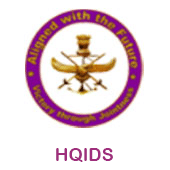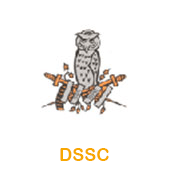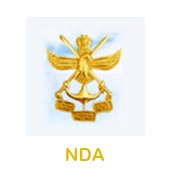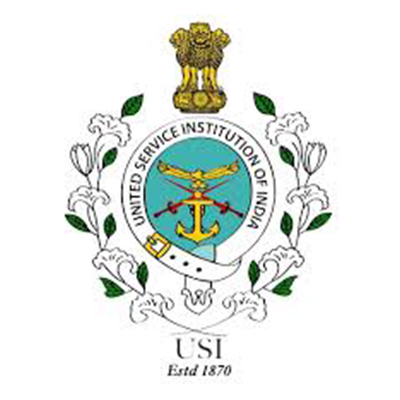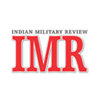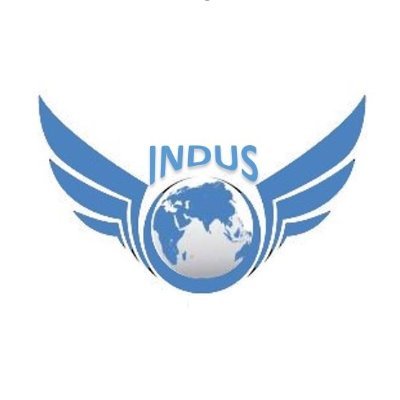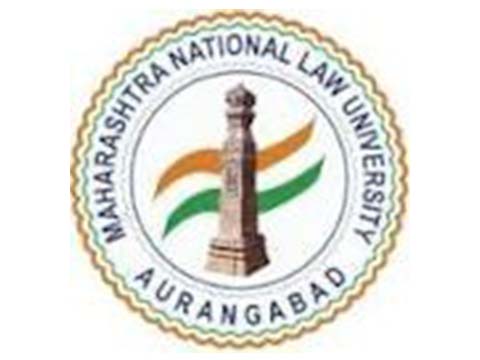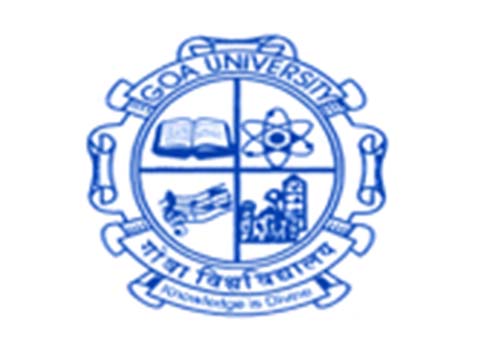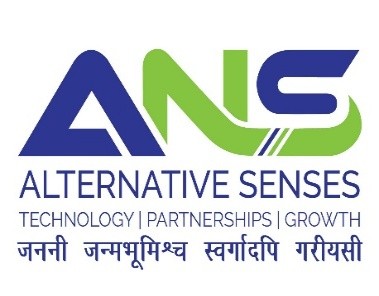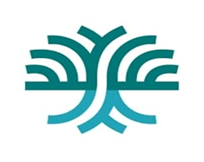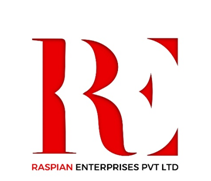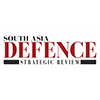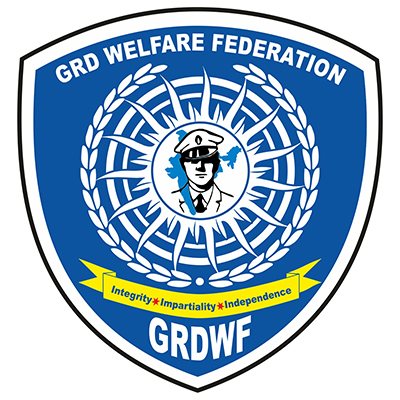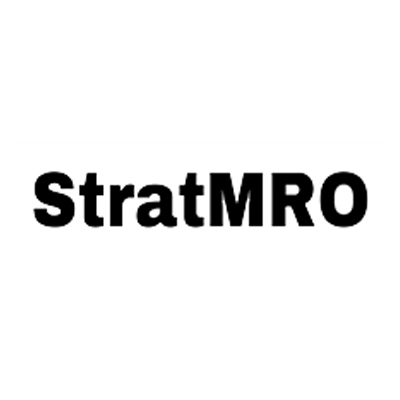Seminar | 14-Sep-2017
Posted on | 14-Sep-2017
STRUCTURING OF AN INTEGRATED LOGISTICS COMMAND IN THE INDIAN CONTEXT ON 14 SEP 17 AT PURPLE BAY, INDIA GATE
1. The discussion commenced at 1030hrs with introductory remarks by Lt Gen Vinod Bhatia, PVSM. AVSM, SM (Retd) Director, CENJOWS. He opened his talk with reference to Indo-Pak War of 1971, OP CACTUS in Maldives and OP PAWAN, which are examples of excellent jointness between services in the past. He pointed out that current RTD on “Structuring of an Integrated Logistics command in the Indian Context” is follow-on of the series of similar discussions carried out by CENJOWS in the past for promoting Jointness in Armed forces. The other areas of joint-ness in armed forces underreckoning in this think-tank relate to the core areas of Intelligence, Training, Planning, Communication and Logistics. The reason why we have chosen discussion on Integration in the area of logistics as it appears doable and feasible to implement.
First Speaker
2. Lt Gen Rakesh Sharma, PVSM, UYSM, VSM (Retd) in his opening talk stressed that till date the joint-ness between various segments of the Armed forces is still only skin deep and in the initial stages and more movement in this regard is required by all concerned. Therefore, he raised a question that do we at this stage require a structured Logistics command? The high lights of the other points stressed by him in the course of his talk are as follows:-
(a) The future wars will be intense, sharp, short. The quality of the logistic support will play a major role in success.
(b) Integrating logistic functions is most difficult. Other countries are no better:-
(i) United Kingdom despite being a small force with integrated logistics for nearly twenty years continues face problems. One of its three-star general who discussed the issue with the speaker still defines integration of Logistics in their armed forces at the fledgling state.
(ii) The effectiveness of the integration in American forces can be judged from this fact that in 2003 during war, to cover a small distance of 545 km between Kuwait and Baghdad their forces took 45 days without confronting any sort of opposition.
(iii) In China after theatreisation, the logistic functions are theatre based and not centralized.
(c) India has sufficient expertise in supply chain management in the civil. (Future /Reliance groups) Services still function with archaic processes. Armed forces have not changed.
(d) With change, there is a risk of failures and likely turbulence in the status quo. Armed forces prefer status quo and fear risks and turbulence that goes along with it.
(e) We should first seek integration in Logistics functions beforeseeking integrated command. The term command could be misunderstood,hence, we could consider callingit a Logistic Agency which would essentially bean administrative/ coordinating body to integrate logistic functions of three services.
(f) What should be integrated? For example in army, functions of DGOL, MG, QMG, AG, E-in-C branch, AOM, COM, Dept. of Defence Production etc. can be combined. It is thus, a very wide canvas. Consider those functions for integration which we can achieve in some acceptable time frame. Gen. Sharma suggested for the time being we could leave of DG Acquisition from this ambit.
(g) The integration should be driven from the top. There would be organizational and functional issues which we have to resolve.
(h) It is far more difficult to have integration in the operations.
(j) In civil, the inventory flow is based on push model for flow of inventory. Similarly, most armies follow the life cycle concept and push model in supply chain.
(k) Same item is called by different name in sister services, it is essential to codify and standardize nomenclature for the inventory.
(l) There is also a need for common media forcross communication.
(m) Maximum use of the civilian infrastructure be made.
(n) Corporatization of repair infrastructure is needed. This will eliminate duplication and introduce economy of effort.
(o) To elucidate, the speaker gave examples of repair of common user vehicle (Maruti) and Health, where there is a scope to use civilian Hospital in some areas.
(p) In the beginning, we need to carry put integration in following core areas:-
(i) Supply FOL
(ii) Ordnance stores and inventory.
(iii) Corporatisation of repairs.
(iv) Strategic and tactical moves
(v) Health and Health related issues.
(vi) E-in-C issues.
Second Speaker
3. Air Marshal PV Athawale, PVSM, AVSM, VSM (Retd) accepted the need for integration of the logistics In the Armed Forces. He elucidated on the proposition giving out the following points:-
(a) The civil and military definition of the logistics is different. In civil it may mean Supply Chain Management but, in armed forces it encompasses a wide canvas and covers common design, development, acquisition, maintenance, modification, upgrade, storage, distribution, disposal, infrastructure, personnel and health and care.
(b) Engineering branches with the logistics branch of the Indian Air Force are concerned with the logistics functions.
(c) Globally, there is integration in Logistics functions in UK and USA.
(d) We however are not yet ready for logistics command or national Logistics grid mainly for the following reasons:-
(i) Semantic confusion.
(ii) Vertical isolation among the elements of Logistics.
(iii) Structural inefficiency i.e. the procurement and user agencies are different which gives rise to the questions such as who has authority, responsibility and liability?
(e) Standardization and codification of the following is a prerequsite:-
(i) Materials
(ii) Inventories.
(iii) Products.
(iv) Processes.
(f) Date of the standardization was established in 1962 to work under the JS Supply. There is a need to place it under the HQ IDS.
(g) Accelerate codification of the inventory
(h) Functional integration among the services is adequate.
(j) Integrated Logistics command is not justified at present under the current circumstances.
Third Speaker
4. Rear Admiral (Dr.) Rakesh Chopra, VSM (Retd). He discounted the need for Integrated Logistics in the Armed Forces during peacetime. He suggested joint logistics in Armed Forces is desirable during the operations. The other points deliberated by him are listed below:-
(a) Indo Pak War of 1971, OP CACTUS, and OP PAWAN are the excellent examples of Jointness in armed forces during operations.
(b) Outsourcing some tasks in civil is a good practice and same being is followed in navy even for re-fitment of ships.
(c) He opined that integrated logistics is relevant for countries such as Britain and USA as they confront only out of area operations. This concept does not suit India as we are inward looking and fight all wars on our land.
(d) He disagreed with the view that HQ IDS should take up the function of standardization and codification. This he felt should be best left to the Bureau of Standardization.
(e) Services are not aware of the modern concept of Supply Chain Management. This should form part of the curriculum in the services training institutes.
(f) He concurred with the view to have national supply grid during operations.
Fourth Speaker
5. Maj Gen Umong Sethi, AVSM, VM (Retd) recommended a collaborative approach between services and govt. agencies, state govt and even with communities in the area of operation and extensive use of technology. His proposition is enumerated below:-
(a) Resort to out sourcing wherever feasible. Outsourcing could spur growth of our industry and reduce our tasks and manpower employed to carryout out these tasks and increases our focus on operations.
(b) Use technology which will reduce human involvement, bring transparency, efficient use of funds and eliminate malpractices.
(c) Modern technology such as artificial intelligence, big data analytics and internet of things provide us big opportunity for transformation of Logistics. The available data from these will enable development of specific applications for use at various levels of service formations.
(d) Use of technology is possible in a big way only if broadband communication is provided for the formations at all levels of hierarchy.
(e) Technology will reduce the human intervention except for decision making and bring overall efficiency.
(f) Technology will require due consideration to cybersecurity and need to take measures to maintain planned functions.
(g) He discussed the advantages of automated financial management systems adopted by the in Indian Navy recently and EMMOLS of Indian Air Force. Advantages of automated financial systems accrue in the area of common nomenclature, procurement and maintenance of inventory, supply chain management, audit and finally in discard and disposal.
(h) The common procurement will give economy of scale in expenditure
(i) He recommended creation of a National Procurement Agency, develop common vendors base, eliminate duplicating staff, common supply chain management, incorporate best practices followed in the civil street.
(j) The Joint Logistics agency/command created for the services should have all inventories.
(k) Introduce financial management in the services training curriculum at ab-initio stage of training itself and in courses to train the staff.
(l) The need of the hour is to cut down our Lgs echelons, reduce holding of excessive/duplicate inventory/ materials. Joint Logistics, out sourcing and use of technology provide us an opportunity to achieve this.
Fifth Speaker
6. Air Marshal S Sriram (Retd) gave a divergent view. He felt that present system of logistic management is three services which though different in three services is dictated by their eco-system, specific operational and strategic role and their maintenance philosophy. These are self-sustaining and efficient. He queried then why there should be a need to change it? Other points he put forward, in support of his argument are listed below:-
(a) The logistics structures in the individual service are dictated by its role, area of operation and maintenance philosophy.
(b) Sufficient joint-ness between services already exists. The change could be sought only if we face problems. Are we facing any problems?
(c) IAF has been sufficient flexible to meet the supply chain requirements of specific contingencies. In support of this he referred to a specific structure of supply chain management created to support Mig-25 aircraft as long it was in service. Similarly, IAF has looked after the supply chain requirement of the HAWK trainer on its induction.
(d) IAF is alive to best practices/ concepts in the civil. Instead of centralizing, IAF has decentralized the maintenance of the common user and specialist vehicles to the units.
(e) As an example of flexible approach adopted by IAF in logistic management he referred to a Follow-on support concept for maintenance of Embraer aircraft, performance based logistics for C-17 and ongoing efforts to interface EMMOLs with HAL better spare and maintenance support.
(f) Our situation is substantially different than the United Kingdom and the USA as both fightat beyond their areas. We would also consider their philosophy in out of area contingency.
(g) In UK and USA, the indigenous military industry provides the military equipment support. Besides, Govt has necessary control on this industry. Contrary to this, most of defence equipment is not indigenously manufactured.
(h) Creation of an Integrated Command or /National Logistic Agency will form another cog in the chain and may result in delayed in decision taking. The agency will not have belongingness to the service and will act as control agency. To support this view, he gave the example of IFA who instead of being an advisor have started acting as a controlling agency.
(i) Decision in this regard if any, should consider all aspects and be imposed from above as the Armed forces by nature are reluctant to accept changes unless these are imposed from above.
Q&A Session
7. In question & answer session there were no questions or queries from the speakers however, some from the audience expressed the following views:-
(a) Try out the concept of joint logistics in Andaman Nicobar command.
(b) The planned space and Cyber commands have been realized onlyas Space Cell and Cyber cell hence, visualizing Integrated Lgs command for services is an mere utopian and not feasible.
(c) We defiantly require National level Agency to co-ordinate logistic functions of three services.
(d) Automation of supply chain management is an advantage.
(e) Engineering support, medical, repair of common and Vehicles is possible under the theatreised concept.
(f) Specialists Medical facilities are available within 25 to 30 km of the entire western border; hence, doing away of the field ambulances is feasible at most places.
(g) Theatreised concept for repair of common users/vehicles beperused after theaterisation. Whereas, specialists vehicles/platforms specific to the service be maintained by the parent service itself.
(h) We must adopt to push model/ auto replenishment of inventory.
(i) Movement dte is good example of tri-service integrated functioning.
The Concluding Remarks of Lt Gen PJS Pannu, AVSM, VSM, DCIDS (DOT)
8. The highlights are listed below:-
(a) Logistics supports operation but, paradoxically it is not given necessary weightage in war games.
(b) Centralized Standardized and Regionalised inventory will help in fighting war economically.
(c)Logistics models are available in the NATO which are time tested and can be adopted by us.
(d) Each service working environment is vastly different. Logistics system will have to take into account the far flung field areas beyond the reach of civil contractors, where communication toomay not be reliable.
(e) It is necessary to fight an economical war which the country can sustain. Large stocks which are likely to be LOB need to be foreseen.
(f)Any organization so created must be liable and accountable to support operations
(g) Baby steps to be taken introduce minimum changes that resultin maximum effect and causing least turbulence.
(h)There should be “Joint Logistics Doctrine” clearly defining the adversaries, the type of war and methodology of support.

